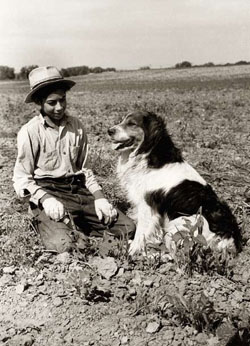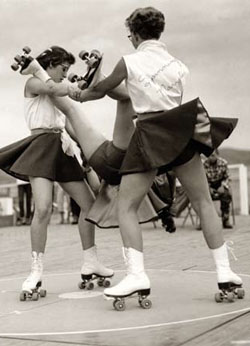Montana: Stories of the Land
Companion Website and Online Teacher's Guide
Chapter 20 - Building a New Montana, 1945-1965
Chapter 1 - Montana: Where the Land Writes History
Chapter 2 - People of the Dog Days
Chapter 3 - From Dog Days to Horse Warriors
Chapter 4 - Newcomers Explore the Region
Chapter 5 - Beaver, Bison, and Black Robes
Chapter 6 - Montana's Gold and Silver Boom
Chapter 7 - Two Worlds Collide
Chapter 8 - Livestock and the Open Range
Chapter 9 - Railroads Link Montana to the Nation
Chapter 10 - Politics and the Copper Kings
Chapter 11 - The Early Reservation Years
Chapter 12 - Logging in the "High Lonesome"
Chapter 13 - Homesteading This Dry Land
Chapter 14 - Towns Have Lives, Too
Chapter 15 - Progressive Montana
Chapter 16 - Montana and World War I
Chapter 17 - Montanans on the Move
Chapter 18 - The Great Depression Transforms Montana
Chapter 19 - World War II in Montana
Chapter 20 - Building a New Montana
Chapter 21 - A People's Constitution
Chapter 22 - Living in a New Montana
Learning From Historical Documents
Letter from Sam Chase, Vice President of the Montana Power Company, to the U.S. Army Corp of Engineers, Regarding the Knowles Dam. Montana Governors records, 1889-1962. Manuscript Collection 35. [box 153 folder 8] and Letter from S. R. Logan to Clifford Davis, September 15, 1962. Frances Logan Merriam papers, 1948-1972. Manuscript Collection 58. [box 10 folder 2]. Montana Historical Society Research Center. Archives. Excerpted in Not In Precious Metals Alone: A Manuscript History of Montana (Helena, 1976): 264-65.
Context for Sam Chase's and S. R. Logan's Letters:
Controversy over establishing power sites on the Clark Fork River typified the concerns such development fostered. Two different proposals to dam the Clark Fork galvanized citizens, who debated public or private power development, environmental issues, corporate domination, and balancing jobs/progress with farms/lifestyle. The Corps of Engineers' Paradise/Knowles alternatives clashed with the Buffalo Rapids plan, proposed by Montana Power Company. Groups aligned behind these dissimilar projects as their interests warranted. From the first suggestions in the late 1940s until the issue faded in the 1960s, the controversy over site and size of dams on the Clark Fork colored political campaigns, led to virulent rhetoric and animosity, and accomplished little in the field of hydroelectric power development. S. R. Logan, a retired educator living near Charlo, and Sam B. Chase, Montana Power Company executive, voiced opposing views.
-
Complete a Written Document Analysis Worksheet.
About Primary Sources:
Letters, diary entries, census records, newspapers, and photographs are all examples of "primary sources," material created at a particular moment in the past that has survived into the present. Primary sources can provide clues to the past. They are our windows into an earlier time. The Montana Historical Society contains thousands of primary sources. In the 1970s, archivists collected just a few snippets into a book, which they called Not in Precious Metals Alone: A Manuscript History of Montana. That book is now on the web in its entirety. The above sample from that book relates directly to this chapter.


